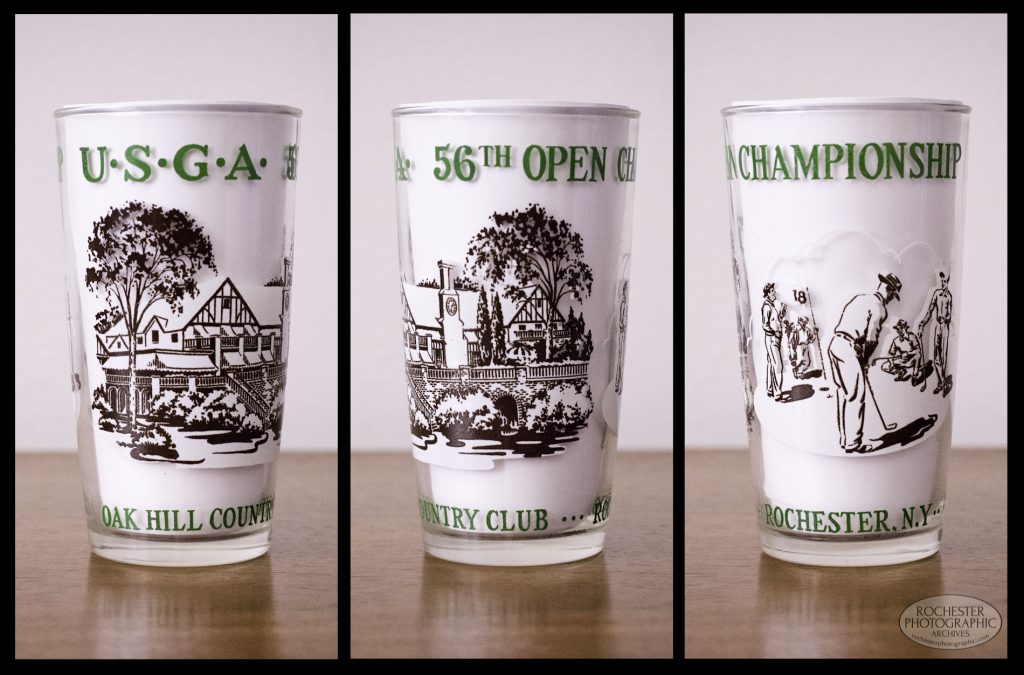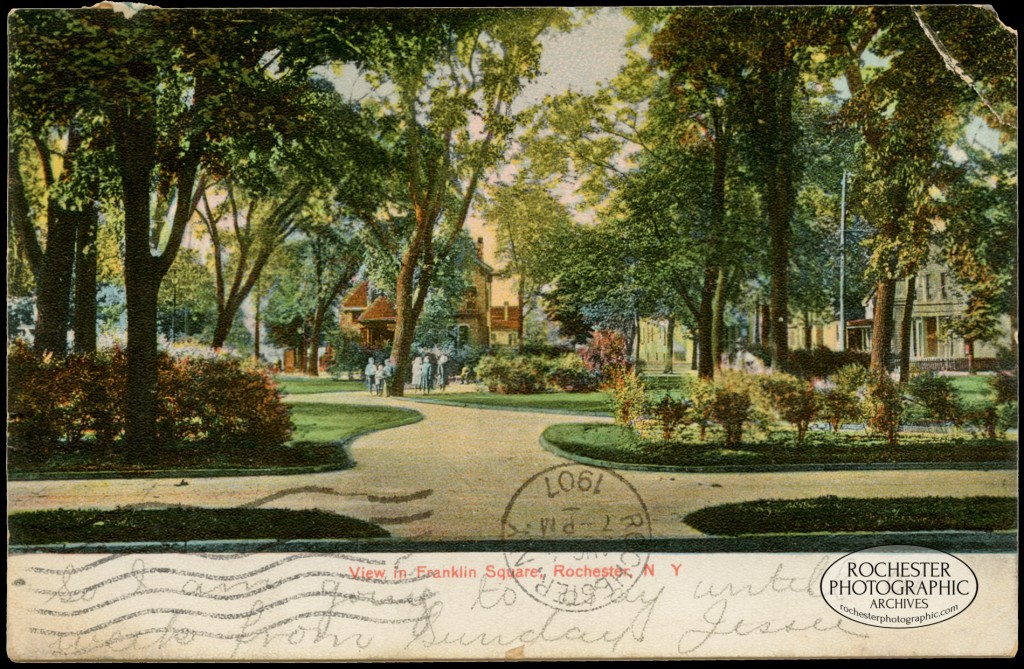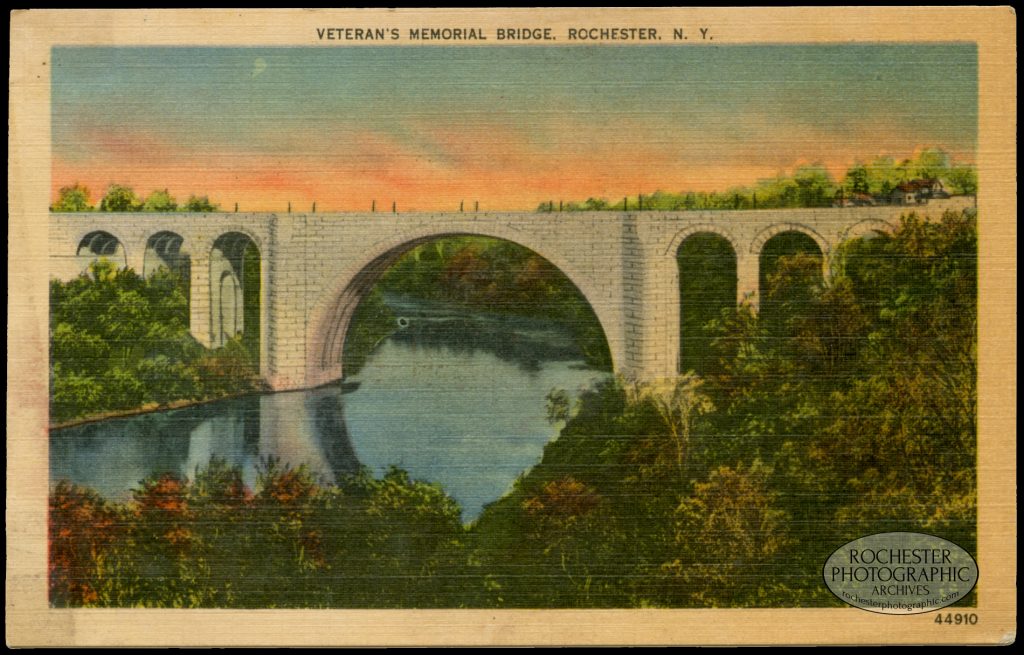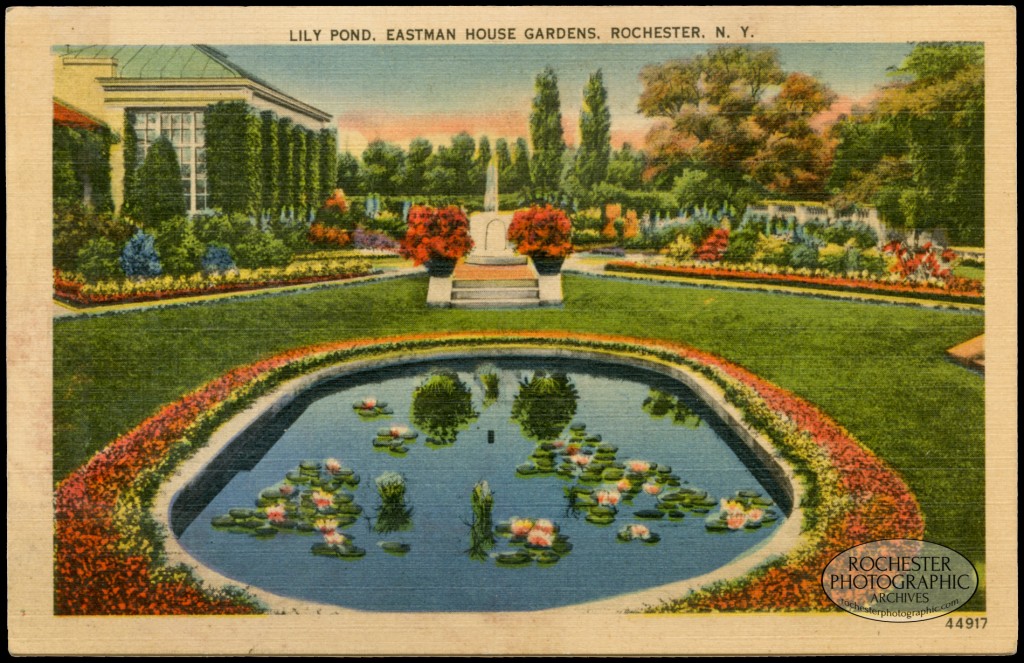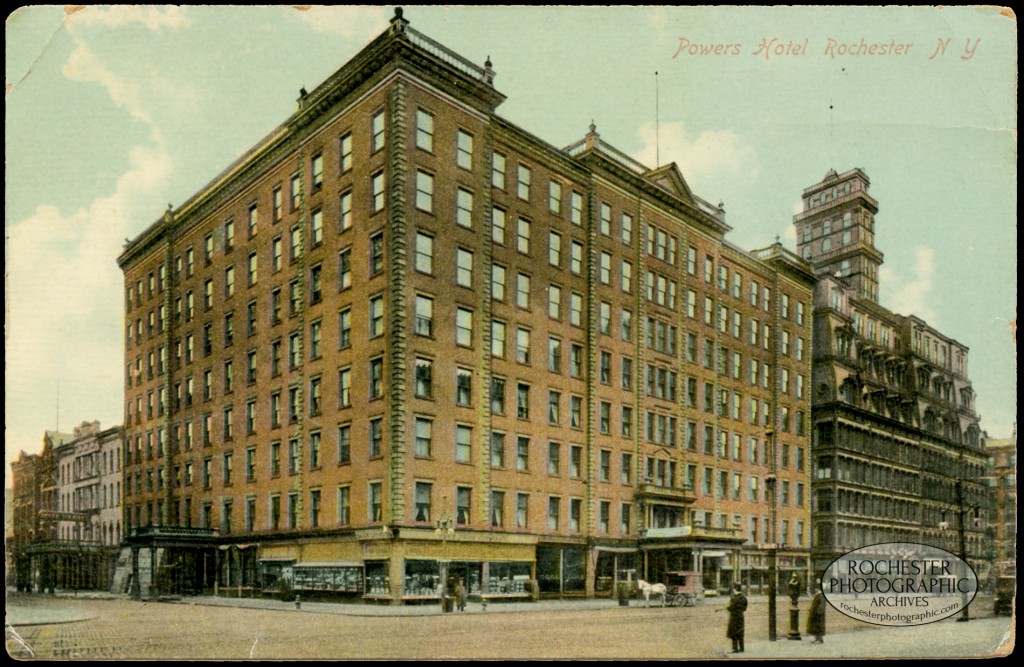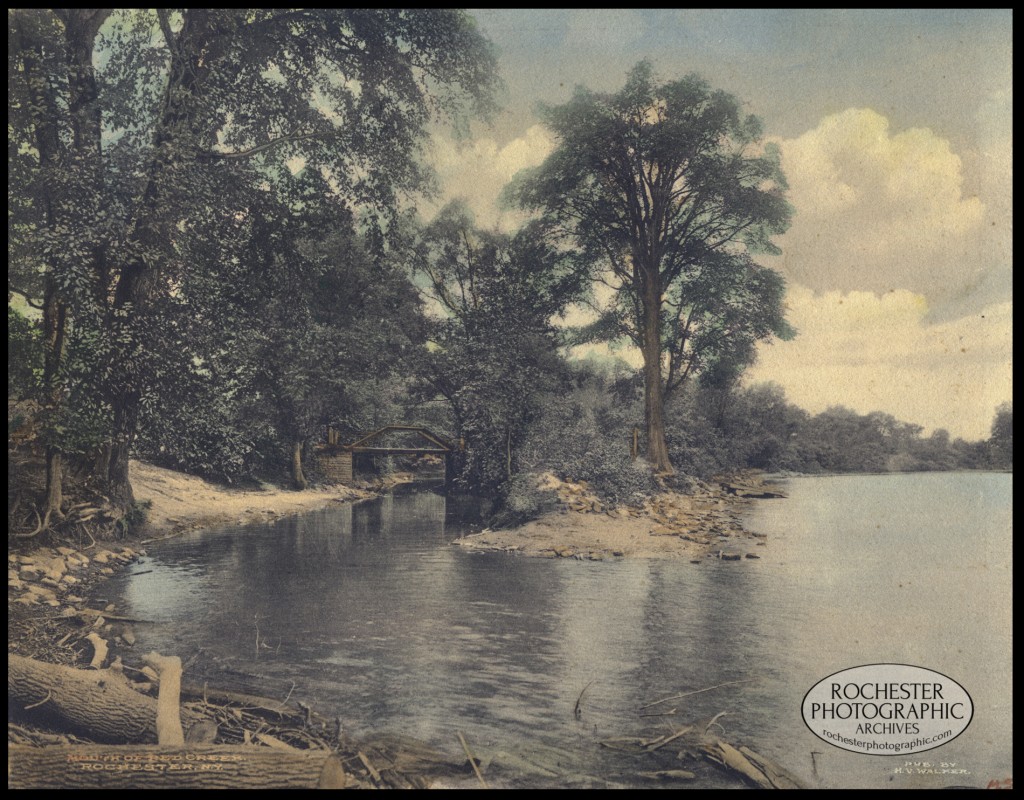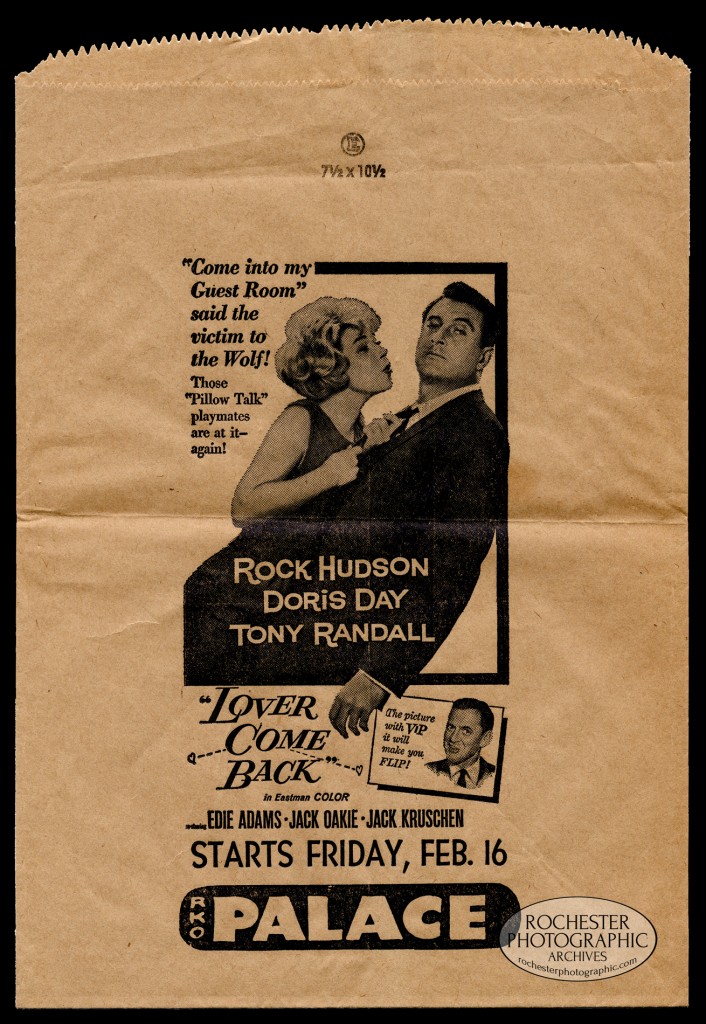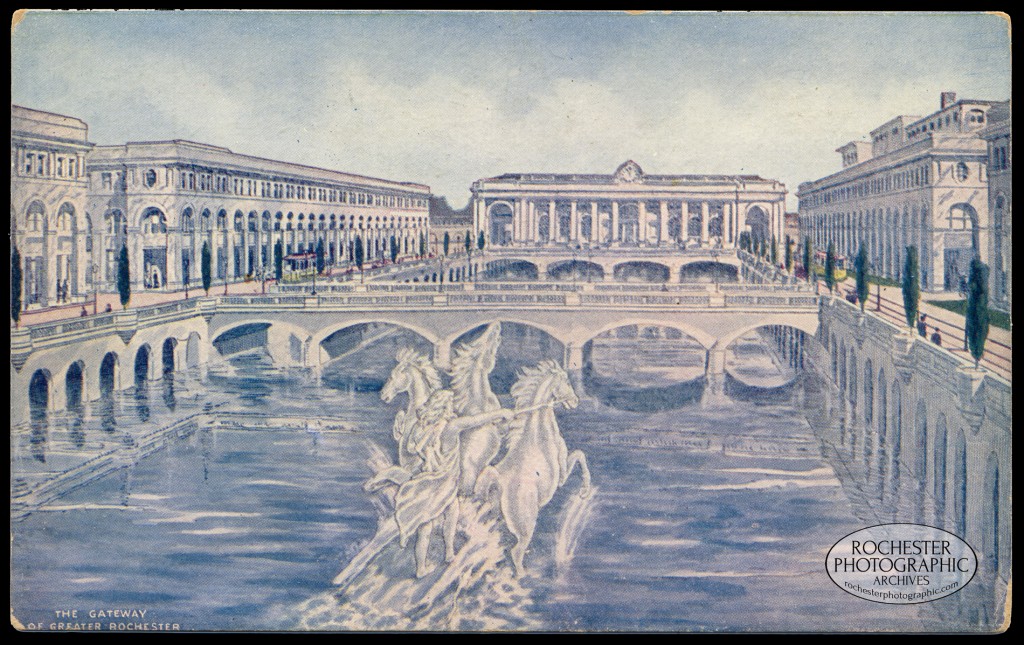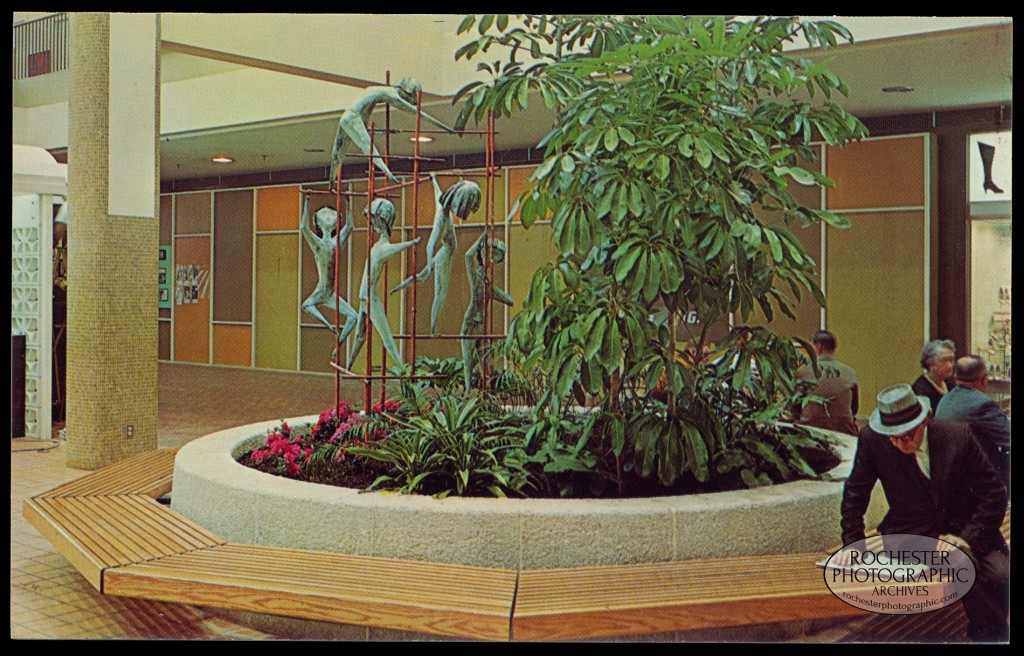

Lawrence J. Hickson was a pioneer of radio in Rochester. He began his experiments in 1911 while studying Electrics at Mechanics Institute (Rochester Institute of Technology). After WWI he resumed his experiments and in December 1920 Hickson began a weekly broadcast of a phonograph record from his home in Irondequoit. The following year Hickson Electric Company opened, and with support from Frank Gannett WHQ was established at the Times-Union building at 22 Exchange Street. In 1922 Hickson sold his interest in WHQ to the Democrat and Chronicle (Gannett would purchase the D&C in 1928). On March 26, 1925 the Hickson Electric Company began broadcasting from the Seneca Hotel as WHEC.
This promotional matchbook features the on air personalities of the daily line up; Ed Meath, Warren Doremus, Dorothy Cotton, Ed Ferland, Jack Friel, Roger Goodrich, John MacDonald, Foster Brooks and Dean Taylor. Although all are notable, one in particular achieved national recognition. Foster Brooks, comedian and actor, was born in 1912 and began his career in radio in his native Louisville, Kentucky. In the early 1940’s and again in the late 1950’s he worked for WHAM and in 1960 for WHEC. Brooks left for Los Angeles in 1961. He was most notably famous for his ‘lovable lush’ act, appearing regularly on The Dean Martin Show and The Dean Martin Celebrity Roast. For many years he owned a home in Rush, New York. Foster Brooks passed away in December 2001 in California. Reproduced from 3¾” x 12½” matchbook.
